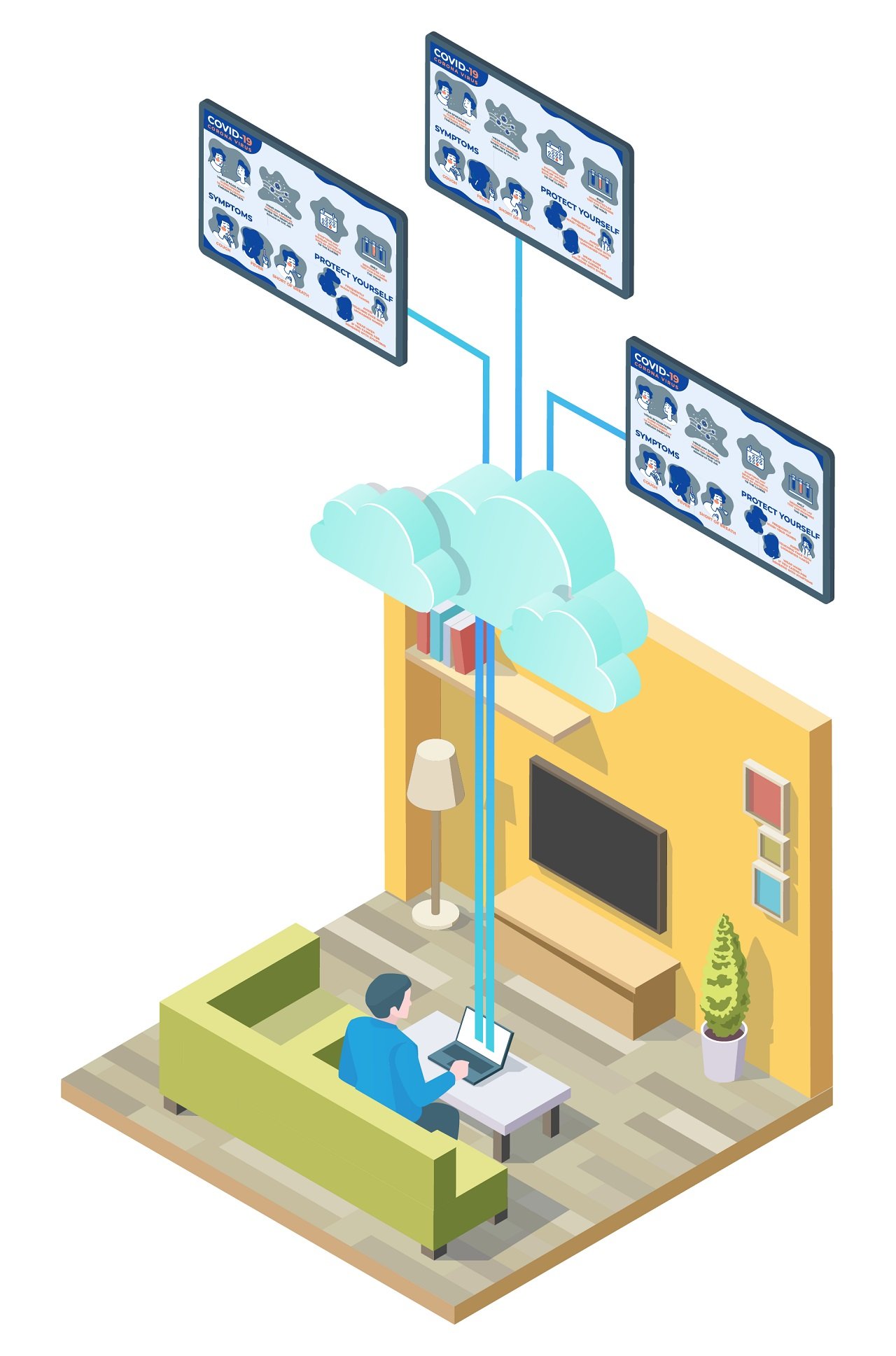Emergencies are often unforeseen – they catch us unawares. Even though it might seem pessimistic to some to start thinking about these critical situations, it is always good to adequately prepare for them beforehand. Proactive measures may not totally stop disasters from happening, but definitely will lower casualty rates when tragedy strikes. You need an emergency warning system.
So, when disaster strikes, as part of strategies to minimize casualty and panicking, there should be a proficient digital system in place, to warn, inform and guide people so they can be adequately protected and safe from harm. When it comes to digital emergency warning systems, there are several technologies that can be used, but no doubt, a digital signage in the cloud service is one of the most effective ways to reach everyone in emergencies.
Digital equipment like laptops, desktop computers, smartphones, and digital signage in the cloud displays can be optimized with cutting-edge technology to become essential tools of an emergency warning network in terms of crisis. Be it severe weather, fire accidents, terrorist attacks, natural disasters or disease outbreaks, incorporating several digital devices instead of simply relying on one makes the emergency warning system more robust, efficient and fail-safe. This means that more people can be reached, more lives saved and much danger averted.
What Do You Need to Create an Efficient Digital Emergency Warning System?
No matter the type of building: schools, churches, hospitals, or even corporate offices, security is always a prime concern. This is why several tools, techniques and technologies need to be deployed to ensure that casualty rates are minimized as possible. Even though developing a robust emergency warning system can seem colossal and expensive, it usually isn’t the case.
Most times, your organization or office building may already have most of the necessary equipment to keep people safe and warn them of impending danger. All that’s left is probably deploying the appropriate responsive technology to interface and connect your digital devices into a centralized warning system. Enter digital signage in the cloud technology!
Why Deploy an Emergency Warning System in the Cloud Solution?
Simply put, digital signage in the cloud service is an affordable and easy-to-use technology for mass communication, so it will be a potent tool to add to your organization’s emergency warning system. Because it is also scalable, flexible and easy to integrate with existing technologies, it can be an effective solution to inform and protect workers, visitors and everyone in your organization, business, school or church in case of life-threatening happenstances.
For example, many schools across the country already employ the Common Alerting Protocol, (or CAP Alerts), during emergencies, to send messages to their students, teachers and other members of staff. So, an emergency warning system in the cloud can be seamlessly integrated with your CAP Alerts to ensure that everyone is notified and rightly guided to know the safest steps to take in an emergency.
Since digital signage in the cloud screens support text, audio, pictures and video formats, it can rightly communicate to everyone regardless of impairment or disability. This is why it is important to always consider the visibility of the digital signage in the cloud screens and the readability of the displayed contents. It is imperative to place the screens in conspicuous sites and ensure that the displays are readable from a considerable distance as well. Since people may be in panic mode during moments of crisis, it is recommended that you ensure that you modify the colors, font and style so that the slides stand out.
Even though the content editor or manager doesn’t have to be at the scene of the emergency to update and push the contents to the emergency warning system digital signage, it is advisable to spend time to properly train multiple employees on how to update and modify the contents of your cloud-based signage as a contingency measure if the usual content manager person is not on call. Lastly, don’t forget to have a power backup plan on ground just in the event of a power outage.


